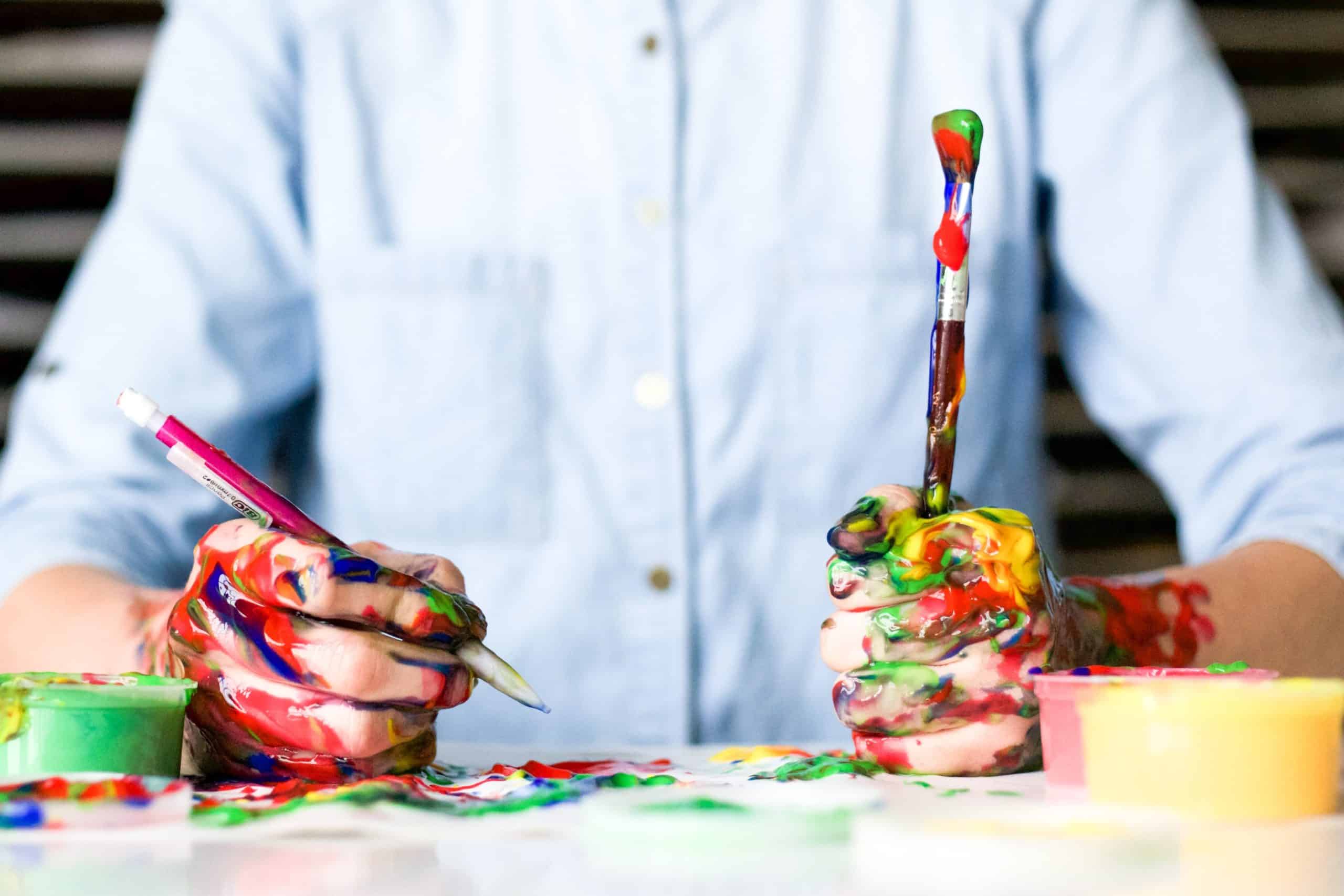As children of the early 90s, my little brother and I had few options when it comes to daytime entertainment. Compared to the plethora of outlets like Netflix or Youtube today, all we had was the TV, and we often found ourselves glued to it, consuming anything that happened to be playing. Daytime TV was filled with soap operas and talk shows. As kids, we never cared much for the exaggerated acting and drama on soap operas, while the staged fights and ridiculous premises of talk shows like Jerry Springer or Maury got stale pretty quickly. Searching for something else, we discovered a mellow show on PBS called the Joy of Painting, hosted by the soft-spoken Bob Ross. The premise of the show is pretty simple: in twenty five minutes, Bob Ross turns a blank canvas into a beautiful painting. With that, he captured our attention, at least for a half hour or so.
As fascinated as we were with his ability to churn out paintings in record time, that wasn’t the point of the show. The point of the show was in its name, the Joy of Painting.. Ross wanted to show that anyone can pick up a brush and enjoy the experience of painting, including those who did not consider themselves to be artistically gifted. If you found yourself more willing to paint and enjoy the experience, the show accomplished what it set out to do. Bob Ross’s favorite saying was that “there are no mistakes, only happy accidents.”
While Ross passed away in 1995, his spirit lives on through social media, particularly video-sharing platforms like Youtube where content-creators share their free instructive videos to the masses. Anyone who wants to paint can find a Youtube channel covering the medium of their choice, ranging from charcoal to digital. Entering into the world of painting has never been more accessible than it is now.
It was through one of these Youtube channels that I learned the basics of digital painting. I started with introductory tutorial videos on how to use ProCreate, a popular art creation app for the iPad. After familiarizing myself with the basic functionality, I moved to watching a how-to series, focusing on landscape painting. Since the Youtube algorithm knows what I’m interested in, more and more painting videos got recommended to me and my foray into the world of painting took hold.
While it is a joy to learn how to paint, the process itself has not been without bumps. For example, a number of my early paintings were destined from the get-go for the delete bin. From those works, it was difficult to see how I could possibly paint better, and I started to question if practice actually helped. Sure, it was fun to paint, but what’s the point if all I’ll ever end up producing are paintings that look like works of kindergarteners learning to finger paint for the first time? These doubts put a damper on any initial joy and enthusiasm.
I kept trudging on, believing first and foremost that I paint for fun. Remembering Bob Ross, I told myself that the finger-paintings I produced were “happy accidents” rather than mistakes. I got better as time went on. The clearest example of this is illustrated by the two paintings below, both followed the same tutorial but produced a month or two apart. The daily effort that I put in actually paid off.
What has learning to paint taught me? I’ve learned that while the little things can seem so insignificant in the moment, over time they contribute so much to one’s craft. This has parallels to other aspects of our lives including our relationship with God and prayer. As a Jesuit, my relationship with God is rooted in my daily prayer. But does prayer actually bring me closer to God? There are times when I feel as if I just wasted thirty minutes doing absolutely nothing during my prayer period. Just looking at these experiences, I can be tempted to think that prayer does not bring me closer to God. However, looking at my relationship with God right now compared to where it was years ago, I cannot deny that the bond is ever-growing. Those little, “wasted” prayer periods had a lot to do with it.
It’s not just prayer. Anyone who has ever tried to pick up a new language can attest to this: the boring lessons, the vocabularies, the broken conversations. These small, unpleasant things enhance one’s proficiency in a new language. In family life, the insignificant contributions of each member end up being the thread that holds the seams of the family together. Chores, while minor and tedious, require every member of the family to pitch in. The act of washing the dishes may not elicit any profound insight, but it represents the small labor of love that props up the bigger unit of the family. We may not enjoy our chores or be able to see how they impact our family in a significant way, but deep down we know that we cannot ignore them either!
Without the smaller things paving the way, the greater things cannot come to be. In the end, we must have patience and trust in the little things that are part of this greater project. We might doubt the small steps along the way when things don’t exactly go our way, or when we make mistakes. We have to have hope that our mistakes are not just mistakes, rather, they are “happy accidents” that God placed on our paths.
-//-
Photo by Alice Dietrich on Unsplash.




